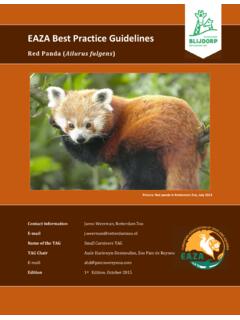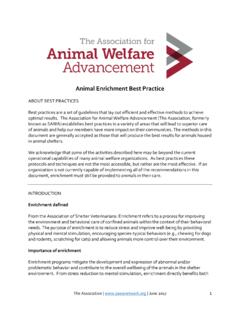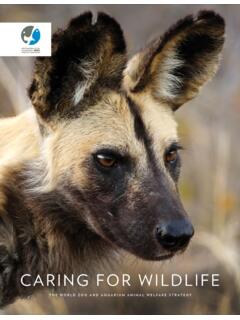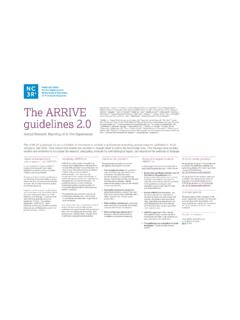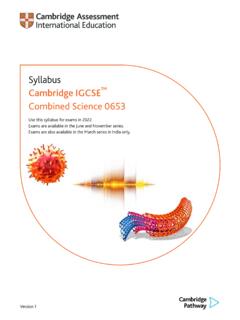Transcription of EAZA Falconiformes and Strigiformes Taxon Advisory Group …
1 EAZA Falconiformes and Strigiformes TAG. EAZA Falconiformes and Strigiformes Taxon Advisory Group Husbandry and Management Guidelines For Demonstration Birds Mark Habben Jemima Parry-Jones MBE. EAZA Falconiformes and Strigiformes TAG Chair Chief Executive Officer Zoological Society of London The International Centre for Birds of Prey Edited by Dominik Fisher - Veterinary Advisor to the EAZA Falconiformes and Strigiformes TAG. Version , published February 2016. Approved by the EEP Committee as Best Practice Guidelines for all birds that fall under the remit of the Falconiformes and Strigiformes TAG. Belfast, September 2016. 1. EAZA Falconiformes and Strigiformes TAG. Acknowledgements The collated document below would not have been achieved without the co-operation and collaboration with those individuals and institutions who participated in the survey or provided valuable information on the management of display birds within their collections.
2 A number of individuals cited below also provided significant time in editing the work and making a considerable contribution to the current document. Many thanks go to, Jemima Parry-Jones MBE - The International Centre for Birds of Prey Domink Fischer - Veterinary Advisor to the EAZA Falconiformes TAG. William van Lint - Bird TAGs liaison EAZA Executive Office Jim Mackie - ZSL London Zoo Angela Ryan - ZSL London Zoo Rebecca Feenan - ZSL Whipsnade Zoo Andy Hallsworth - Banham Zoo Harald Schmidt - Rotterdam Zoo Nicky Plaskitt - Paradise Wildlife Park Barbara Heidenreich - Barbara's Force Free Animal Training Gary Benton - The Hawk Conservancy Trust Campbell Murn - The Hawk Conservancy Trust Duncan Bolton - Bird World Miguel Santos - Zoo Marine Cathy King - Weltvogelpark Walsrode Carsten Zehrer - Tierpark Hellabrunn, Munchen Gonzalo Fern ndez Hoyo - BioPark Veronica Larsson - Kolmarden Arnaud Dazord - Zoo La Bourbansais 2.
3 EAZA Falconiformes and Strigiformes TAG. Content Introduction 1) Aviary design and holding facilities for free flight birds - Guidelines advising upon the requirements for species free flown within a show. Ensuring requirements are species specific 2) Aviary or holding area location - Transfer of birds to flying area and the placement of aviaries or release facilities. Benefits to box training? 3) Co-habitants and social structure - Social species included in demonstrations. The potential for non trained con-specifics within holding aviaries. 4) Flying Arena - Safe areas in which can be flown free. Identifying hazards 5) Tethering - Guidelines and reasons for tethering trained birds. Considerations and alternative practices. Looking at the individual bird. Hooding, appropriate perch 6) Routine Care - Including coping, imping and furniture changes, specifically for raptors 7) Motivation - Dietary reviews, management and food presentation.
4 Weight management and understanding behaviour. Species specific motivation 8) Training and flying - Recommended practices aimed at maximising the positive association between bird and trainer. Appropriate behaviours for displays incorporating EAZA's Animals in Shows guidelines. 9) Tracking and retrieval - Radio telemetry, GPS, Flying multiple birds in a flock. Lost birds. 10) Non-Show periods - Enrichment, moulting, diet, seasonal climate. 11) Acquisition and exit policies - Acquiring birds for free flight displays. Transfer policies, Aggressive behaviour and notifying receiving collections. 12) Breeding, rearing and free flight Free flying birds before entering breeding programs. 13) Imprints - Looking at when species are imprinted specifically for inclusion in displays. 14) Species selection Selecting species for free flight shows.
5 15) Sustainability Ensuring that birds included within demonstrations are sustainable and conservation priorities are met before inclusion for trained programs. 3. EAZA Falconiformes and Strigiformes TAG. Introduction Frequent and consistent feedback from visitors to zoological collections and specialist centres view free flight demonstrations that feature multiple species of birds as one of the most inspiring ways of observing behaviour and educating visitors to ornithology and an understanding of conservation needs. A more varied repertoire of behaviours can be encountered with a greater variety of choice when a bird is flown free from the confines of all but the largest of aviaries. No matter how large or elaborate an enclosure, there are often limitations to the novel experiences and behaviours that can be achieved within it.
6 Free flight demonstrations, also afford the opportunity to present species to the public that are less commonly seen in collections. This may be due to the inactive nature and poor display potential of the species in an aviary, or to the fact that the species fares less well when placed in aviaries on public display. Many falcon species fit these criteria. Without free flight demonstrations, this impressive Group of birds is rarely encountered in zoological collections. A degree of enjoyment and education should come from the interpretive message delivered by presenters but a key factor for many comes from the lack of barrier between bird and visitor and experiencing birds in free flight. In order to manage the husbandry of demonstration birds we must look to factor in all aspects of management that optimise the welfare of the participating bird or species as well as the wellbeing of the broader animal collection and native wildlife in surrounding areas.
7 Our responsibility to ensuring that we educate the public does not stop at the message we deliver in a demonstration. It is within every aspect of managing a captive animal in a free flight setting. To ascertain key information as to what species were kept for bird displays, how they were managed, and why they were included, the Questionnaire below was devised by the TAG chair and distributed to EAZA member institutions recognised for their demonstrations with free flight birds or experience with displays, training or zoo management. 19 responses including those from the EAZA office, EAZA members, AZA colleagues and the Veterinary Advisor responded. Those responses and subsequent feedback and edits contributed to the collated document attached which follows the guidance already provided by EAZA's, previously published Demonstration Guidelines.
8 Here, the aim is to provide guidance specifically around the management of demonstration raptors whilst touching on other, more commonly included taxonomic groups as advised by TAG chairs. 4. EAZA Falconiformes and Strigiformes TAG. Falconiformes TAG. Birds in free flight demonstrations questionnaire The questionnaire is not limited to Falconiform TAG bird species Zoological Institution . Contact details . Please list the birds designated for free flight displays at your collection: .. Please complete the following questions: 1) Aviary design for free flight birds. Are there any differences in design or dimensions of aviaries for the same species in off show and on show facilities? Yes/No If yes, please provide details. 2) Co-habitants. Are birds managed singly or in pairs? Please provide details. Are social species managed and flown in social groups?
9 Yes/No If social species are kept on their own, what are the reasons for doing so? 3) Aviary/holding area location in comparison to the intended area for free flight. How are birds transferred to the flight area? If boxed, for how long? What parameters are in place to mitigate against extremes of weather? Are release aviaries available and used? Yes/No 4) Tethering What species are tethered in your collection? Please give details. If a bird is tethered, how long within a season is it tethered for? How many days a week does it fly and for how long within a usual, expected routine? Is it allowed to be moulted in a free flight aviary? What measures are in place to protect tethered birds form predators, the elements and adverse weather conditions? 5) Weight management How frequently are dietary reviews carried out for display birds?
10 5. EAZA Falconiformes and Strigiformes TAG. How long within a season is weight management carried out for each bird? How frequently are birds weighed: Birds weighing over 500g Birds weighing less than 500g At the end of a flying/demonstration season how is the food and weight of the bird increased? What measures are in place to ensure a gradual increase in food? How is food presented to the birds throughout the post demonstration season? Are there other, documented benefits that you are aware of with weight managing birds in terms of condition and breeding? 6) Training and flying How do you ensure that best practices are met in terms of bird training to ensure the welfare of the bird, the collection, native wildlife and staff? 7) Acquisition and exit policies How do you acquire birds for your display team?

